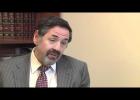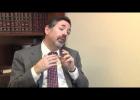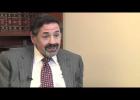Professional Responsibility
Teaching this way engages students deeply because they understand that real decisions (often very critical ones) are at stake.
Professional Responsibility (often called Legal Ethics) is a notoriously difficult subject to teach, in part because it is typically the only course students are required to take after their first year. Yet, it is almost certainly one of the very most relevant courses any student will take as hardly a day goes by in a lawyer’s life without some issue touching on professional responsibility arising. Lawyers frequently fail to spot these issues altogether or, if they do, are not versed in analyzing them and exploring the relevant sources for guidance. It, therefore, is my strong belief that law schools must find ways of engaging students in this topic so that they not only learn the relevant substantive law and think about broader ethical issues, but also become acutely sensitized to the ways in which these issues arise and the methods through which they can be resolved.
The teaching method I use is one that fully integrates the Carnegie Study’s three apprenticeships: substantive knowledge; skills expertise; and professional identity. The course gives students the real responsibility of serving as an Ethics Committee actually resolving problems arising (in real time) within our legal clinics. Other than a memorandum describing the facts of the issue we will be addressing each week, I eschew providing cases or other materials—relying instead on the student to develop research skills in finding appropriate sources that will form the basis of our discussions and decisions.
The students enrolled in the Course are designated as the actual Ethics Committee of Stanford Law School’s Mills Legal Clinic. This is not a role-play—they actually serve in that capacity and reach decisions that will constitute the Clinic’s resolution of the problem. Each week, I prepare a one or two page memo setting forth the operative facts of an actual issue confronting the Clinic at that moment. I provide no guidance on the relevant precedents, rules or sources of guidance (although I do provide a general primer during the early sessions). Instead, the students are instructed to research in teams to find the sources that help inform the decision the Committee will reach on the issue presented. At least two days prior to class, each team of students must circulate a short memorandum outlining the sources they have identified and providing some preliminary analysis. The class sessions are then spent discussing (and often debating) the issues presented and formulating the official decision of the Ethics Committee.
During the final sessions of the course I lecture and lead a more conventional classroom discussion about some of the key issues of professional responsibility that did not happen to arise during the work as the Ethics Committee (although it is almost always the case that a wide array of issues have, in fact, arisen).
Finally, I meet three times with the students in groups of five in my office to discuss some broader ethical issues facing lawyers and the profession. These sessions include issues such a role differentiation, whether one has a moral duty to use one’s skills in ways that best promote the betterment of society and how to combat lawyer burnout. These discussions are often intensely personal and are best conducted in a small setting. In many instances, these sessions lead to one-on-one follow-up conversations about some of the issues that the group has discussed.
Teaching this way has several benefits from my perspective. First, it engages students deeply because they understand that real decisions (often very critical ones) are at stake. Second, it takes away the opportunity for students to hedge their answers, for at the end of the day the class must make an actual collective decision. Third, it models how lawyers can and should take ethical issues seriously, treating them as essential components of lawyers’ work. Fourth, it helps develop the research skills and familiarity with the array of available sources that are of great value in the practice of law—a setting in which lawyers are not given excerpts of already-identified cases, rules or articles to conduct their analysis.
The students, working in teams, submit an outline each week of the research they have done in response to the 1-2 page memo I circulate describing the issue we will be addressing. I provide feedback on these outlines during class and, at time, invite students who appear to be struggling for private meetings. Each student is expected to participate robustly in the discussion of the issues and, again, I provide feedback both during the class and in private meetings. Each student is then required to work as part of a team on one actual Memorandum describing the Committee’s resolution of the issue—with discussion of the authorities upon which the Committee relied. When the class is split on the proper resolution, other students will work as a team in drafting a dissenting opinion. I provide feedback on this written work product through e-mail and, when possible, office meetings with each team.
- It is critical to develop a relationship with some entity—be it a legal clinic, NGO (non-governmental organizations) or even a private firm—that is willing to vest significant responsibility in the class to act as the Ethics Committee. It is not imperative that the entity bind itself to follow the conclusion of the Committee, but the students must be able to appreciate that their resolution of the issue will be given very significant weight in the ultimate decision.
- The class should be kept small, if at all possible. I usually restrict enrollment to 25 students, which allows us to sit around a conference table to discuss issues and deliberate. It also makes the small group sessions workable (three meetings each with five groups of five requires 15 meetings per semester or quarter).
- Generally speaking, some pressing ethical issue requiring attention is available for the committee to analyze. When that is not the case, I have a set of longer-term problems on the shelf that can be used. In the past these have included issues such as: how to talk to clients about the limits of confidentiality; the propriety of data mining adversary’s documents; and the disclosing client names as part of students’ conflict checks with future employers.
The evidence of effectiveness comes from seeing the improvement in the quality of the student’s research and analysis from the beginning of the course to the end. In addition, in their end-of-the-course evaluations, students often describe the class as a very significant one in the scaffold of their education—mentioning on the ways in which it integrates the theoretical framework of the topic with an intense problem solving approach.



